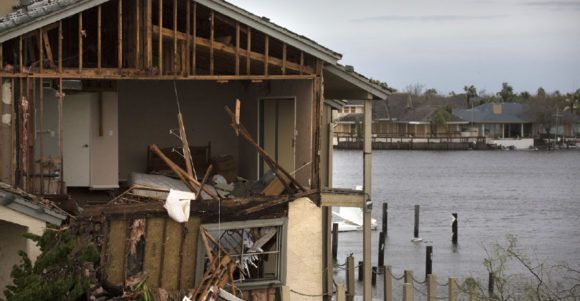The images of familiar places underwater in South Texas and Floria haunt us. The spirit of volunteers risking their lives to help strangers emboldens us. But those in the home building insurance industry naturally start to think about the near and medium-term future.
The national homebuilding general liability insurance market has been gathering input from clients, brokers and experts, and can share observations. Our focus is on the new home building and general liability. We recognize that there are other aspects such as property and builders’ risk.
1. Skilled Labor Shortages
Skilled labor was a problem before Harvey; now it will be a nightmare. On a national level, the two biggest impediments to new construction are the lack of land and labor. In Texas, where some report that 10 percent of all new housing was slated to be built in this one state, competition for labor was already a problem. Now, with workers displaced from their homes and competition from other types of construction such as flood repair, we expect the labor shortage to become a bigger problem. Lack of skilled labor not only slows down production, but affects quality workmanship.
Helpful hint: After other disasters, some of the builders turned model homes into short-term shelter for their crews. Consult with carriers regarding insurance issues. Also, most builders must increase their quality control efforts for years after a disruption to the labor market to ensure that new crews build to a correct level.
2. Materials
After weather problems in Florida, the construction industry was desperate for materials. In particular, drywall and sheetrock became difficult to source locally. In order to keep up with both rehab and new construction, drywall was imported from countries that had lower quality control standards. The impact on homebuilder’s loss runs and carrier profitability is still being felt.
Helpful hint: Increase tracking of material sourcing from subcontractors. Require documentation of origin of materials as part of the subcontracting process, and ensure that any deviation from the norm is fully documented and inspected. Increase quality control for the medium term to specifically track sourcing.
3. Building Pads
Building pads that were flooded may need to be reworked depending upon any contamination or water damage. There is so much potentially toxic material in the flood waters that future off-gassing may be an issue. Also, pads may be degraded, based upon excessive water too soon after curing.
Helpful hint: Consider spot testing for any contamination or excessive moisture content before continuing to build homes on top of pads.
4. Flood Insurance
Flood insurance coverage may be more difficult to buy for new home construction as the impact of Harvey hits the National Flood Insurance Program. The lack of privately backed flood insurance may impact the constructability of new subdivisions in the South Texas areas.
Helpful hint: Don’t take availability of flood insurance programs for granted going forward. Understand how this may impact the ability to build new housing supplies.
5. Building Codes
Building codes may change. While as usual most of the damage in Harvey was from water and not wind, expect there would be emergency changes to building codes in the affected area. When coupled with a skilled labor shortage, building compliant homes may be an increased challenge.
Helpful hint: Factor extra training for code changes into training superintendents and subcontractors. Hire additional third-party consultants to track changes and ensure all homes are built to any potential changes.
6. Building Speed
Speed of construction will be torn between the lack of materials and labor on one hand and high demand on the other. In an already heated construction market, it will take quite a bit of discipline to build at a steady pace.
Helpful hint: “Haste makes waste” has always been a factor in construction quality. After every large setback, there is a tendency to rush the process. Being prudent may be difficult in the short term, but long-term reputation is difficult to repair. Talk to your insurance carrier and broker about revisions to your projections and whether the builder needs any modifications to its insurance program as early as possible.
Conclusion
These are observations and hints from watching this industry over many disasters. It is difficult to start worrying about the mid-term impacts while people are still out of their homes, but we hope this discussion will help planning processes as our neighbors in South Texas and Florida work together toward recovery.
Topics Texas Flood Construction
Was this article valuable?
Here are more articles you may enjoy.



 Investment Funds File New Suits Over Lighthouse Insurance Collapse in 2022
Investment Funds File New Suits Over Lighthouse Insurance Collapse in 2022  Vintage Ferrari Owners’ Favorite Mechanic Charged With Theft, Fraud
Vintage Ferrari Owners’ Favorite Mechanic Charged With Theft, Fraud  Allstate Reports $731M in Q1 Pretax Catastrophe Losses
Allstate Reports $731M in Q1 Pretax Catastrophe Losses  Trump’s Bond Insurer Tells Judge Shortfall Is ‘Inconceivable’
Trump’s Bond Insurer Tells Judge Shortfall Is ‘Inconceivable’ 


